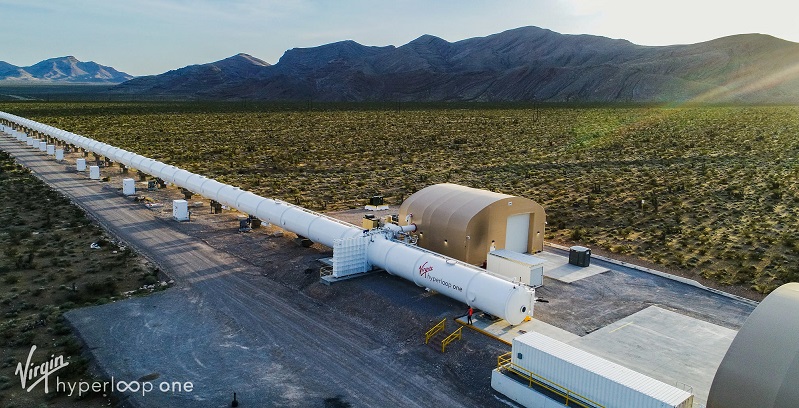CDOT, which announced its involvement in the Hyperloop project in 2016, says the technology works directly with its goals of relieving stress on the state’s most-critical traffic corridors and reducing or eliminating fatal Colorado car accidents.
High-Speed Tube Travel May Connect Colorado Cities
What’s more feasible? Traveling safely from Denver to Vail at 670 mph or finding $24 billion to build a working, economical Hyperloop system to shoot you between the two cities? Colorado is a step closer to finding out.
Colorado’s project has moved into the second half of its feasibility study and remains in contention with several other regions around the globe to prove the Hyperloop concept, The Denver Post’s Tamara Chuang reported. Organizers recently updated the project’s status as they revealed an artist’s rendering of a proposed Hyperloop terminal at 72nd Ave and Himalaya Road, near Denver International Airport.
The so-called Rocky Mountain Hyperloop would allow passengers to travel from the Denver terminal to Pueblo, Greeley, and Vail in only a few minutes.
The experimental technology, championed by Elon Musk, the famed founder of Tesla automobiles and the SpaceX rocket company, would resemble the pneumatic shuttle tubes used in bank drive-through lanes. It would shoot pods containing passengers, cargo, or even automobiles between cities at amazing speeds on magnetic-levitation tracks inside long vacuum tubes. The idea’s biggest boost to date came when British airline and music industry mogul Sir Richard Branson invested millions into the Los Angeles-based Hyperloop One, renaming it Virgin Hyperloop One. That company is developing the Colorado plans along with the Colorado Department of Transportation (CDOT) and global infrastructure builder AECOM.
Virgin Hyperloop One is developing its core technologies, the mechanics of hyperloop travel, at its Los Angeles headquarters and proving grounds in Las Vegas, where it has a short test track. You can see an artist’s rendering of a proposed shuttle pod, watch early test footage from the company’s Nevada test track and more at Virgin Hyperloop One’s Website.
Tube System in Line with Traffic Safety Goals
CDOT, which announced its involvement in the project in 2016, says Hyperloop works directly with its goals of relieving stress on the state’s most-critical traffic corridors and reducing or eliminating fatal Colorado car accidents.
Hyperloop travel will reduce the number of cars on state highways but also target a high-risk segment of road traffic, ski vacationers traveling mountainous highways during wintry weather. And unlike traditional trains, hyperloop tubes will never intersect other roadways; designing engineers can route the tubes under or over existing roads.
Building Public Support
The organizers are now focusing on building public support for the Hyperloop project through what Hyperloop calls “stakeholder engagement.” They need to figure out how to pay for the project and where to lay the tubes.
Dan Katz, Virgin Hyperloop One’s public policy director for North America, told The Denver Post that planners are still debating whether the route should travel north to Greeley or only south, to Colorado Springs. The options are nearly tied, and the project wants the public’s opinion.
Katz said the company picked Colorado as a program contender because of support from CDOT and local governments; now the project needs public and private support to advance.
How to Build, Where to Build, How to Pay for It
The Colorado planners are facing a torrent of questions that must be answered before the first Hyperloop pod ever shoots up the tubes. The biggest concern is finding a way to pay for the project. An initial state report estimated it would cost $24 billion to build; under current calculations, 45 million trips by 2040 would only produce $2 billion in annual revenue.
As with any proposed highway, engineers have to address technical issues such as handling the state’s rough terrain and obtaining rights of way. Katz said the project wants to build its first tubes along the flat terrain of the Front Range, so officials can test and refine its engineering before tackling the mountains.
Amy Ford, a CDOT spokeswoman, told The Post that although the hyperloop technology and transportation mode are unproven, the state needs to look at it and all forms transportation infrastructure to move Coloradans.
For Virgin Hyperloop One, the Centennial State is a good fit, CEO Rob Lloyd said on the company’s web page. Lloyd said:
“Colorado has it all, from booming sectors in aerospace, technology and renewable energy to the Rockies’ natural splendor. … With so many drawn to the state, hyperloop will enable efficient, fast, effortless connections that link Coloradans across city limits to work, live, and play.”

